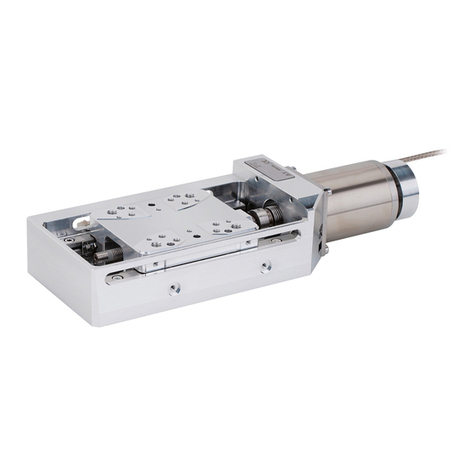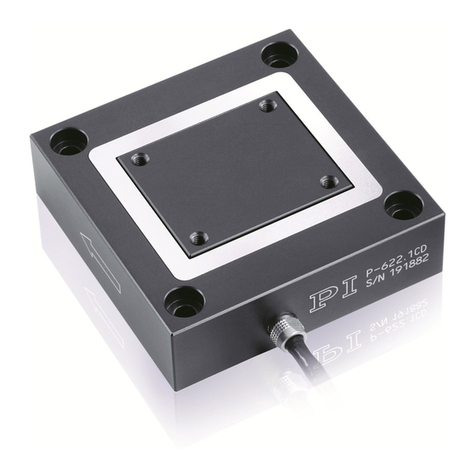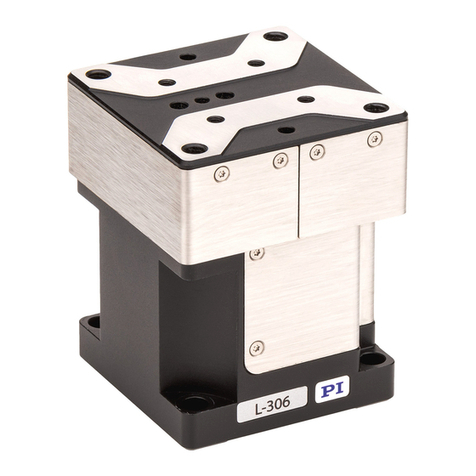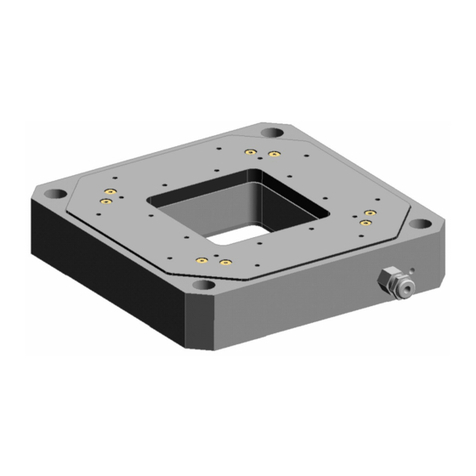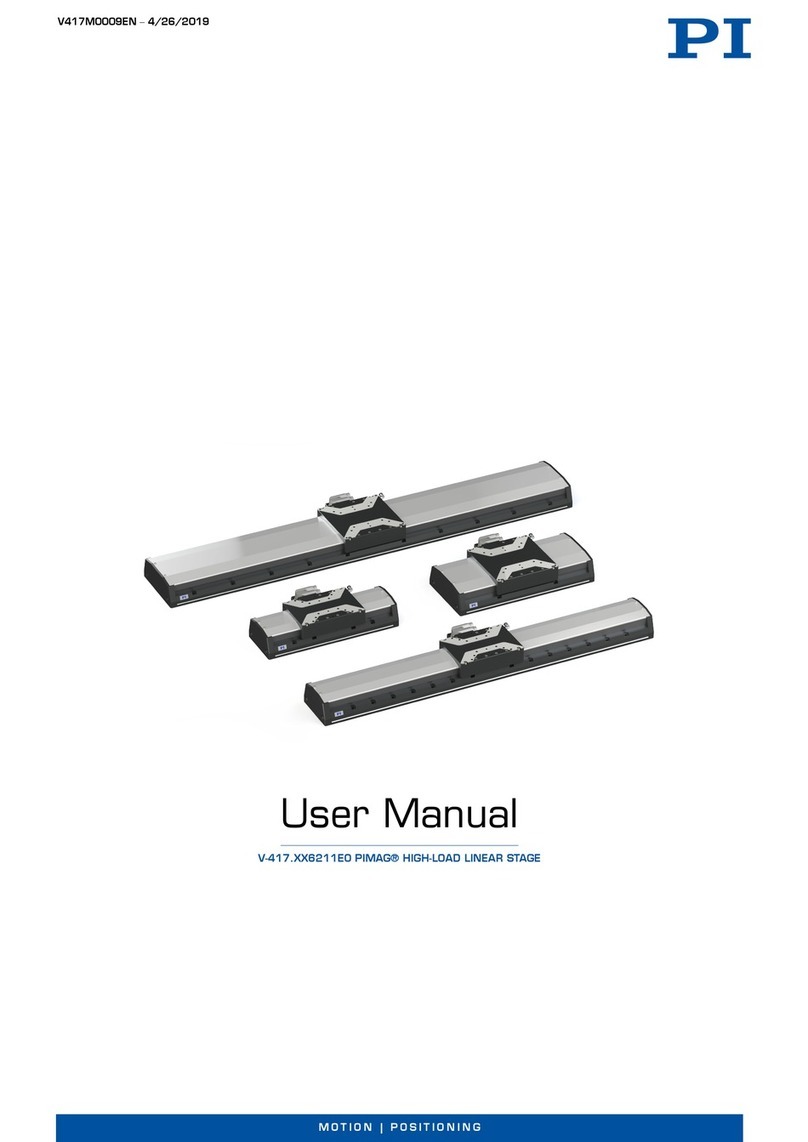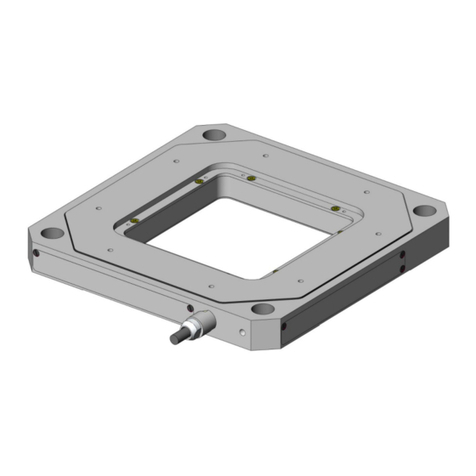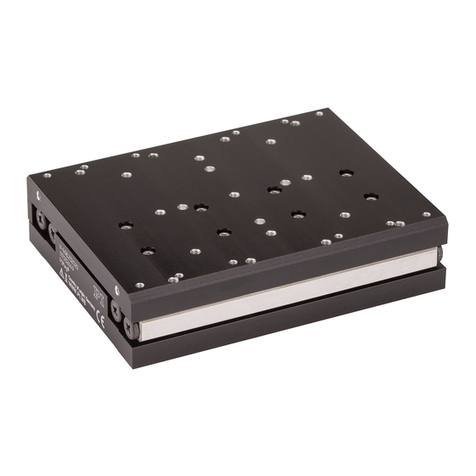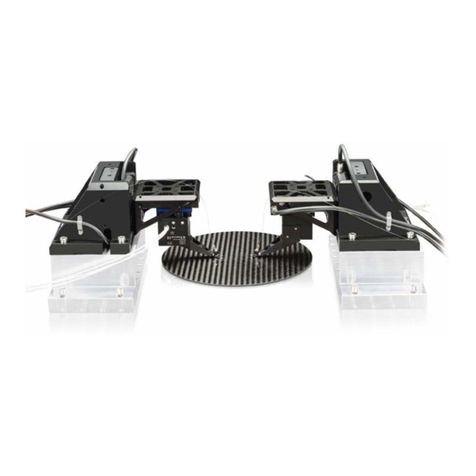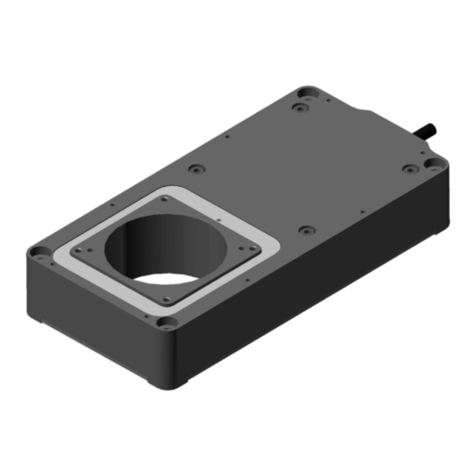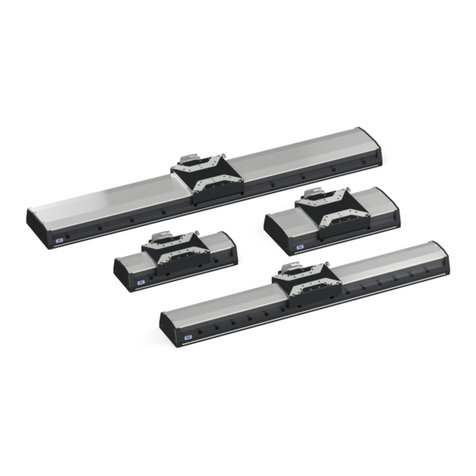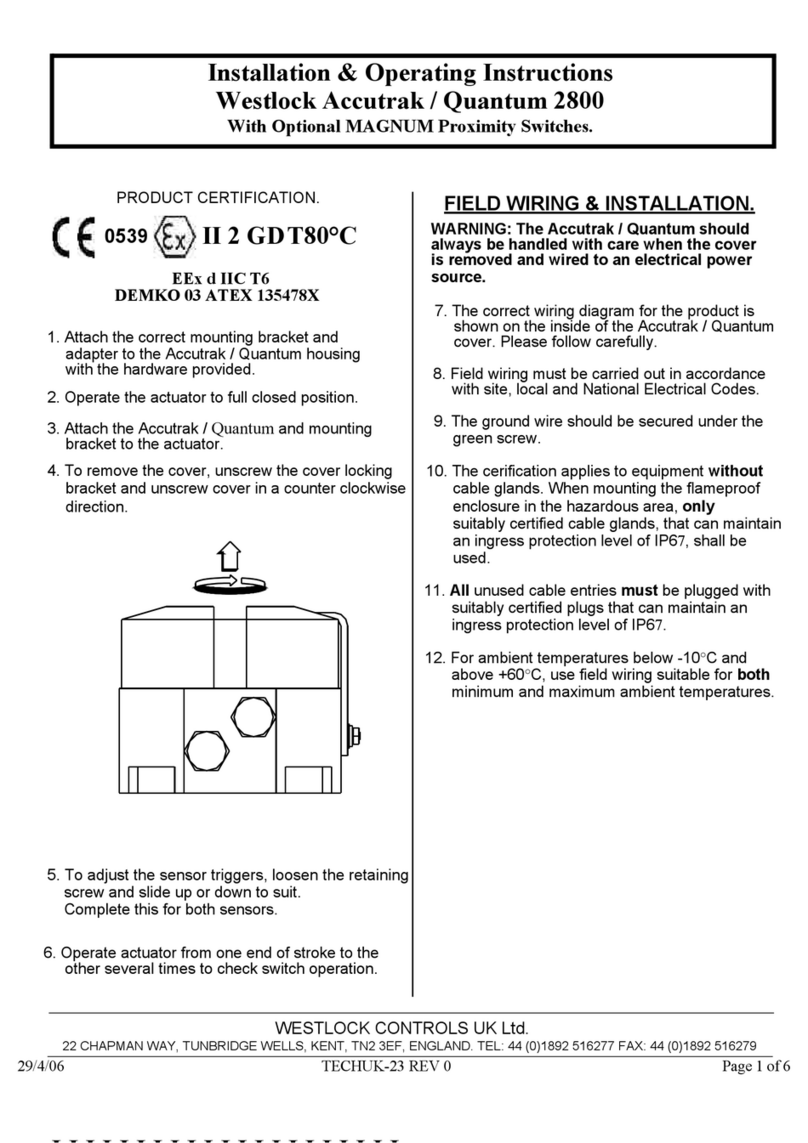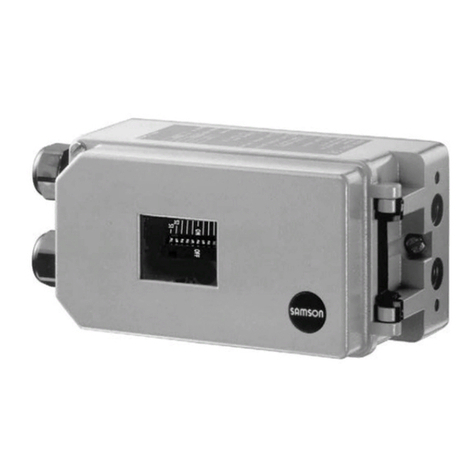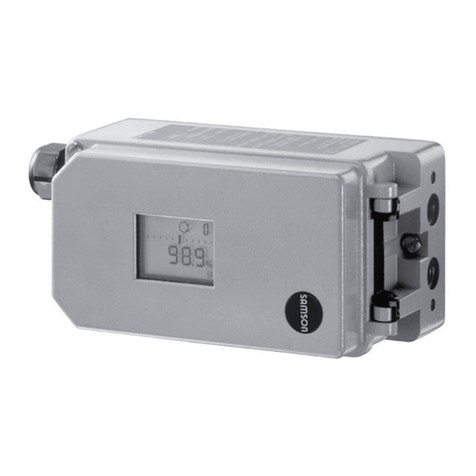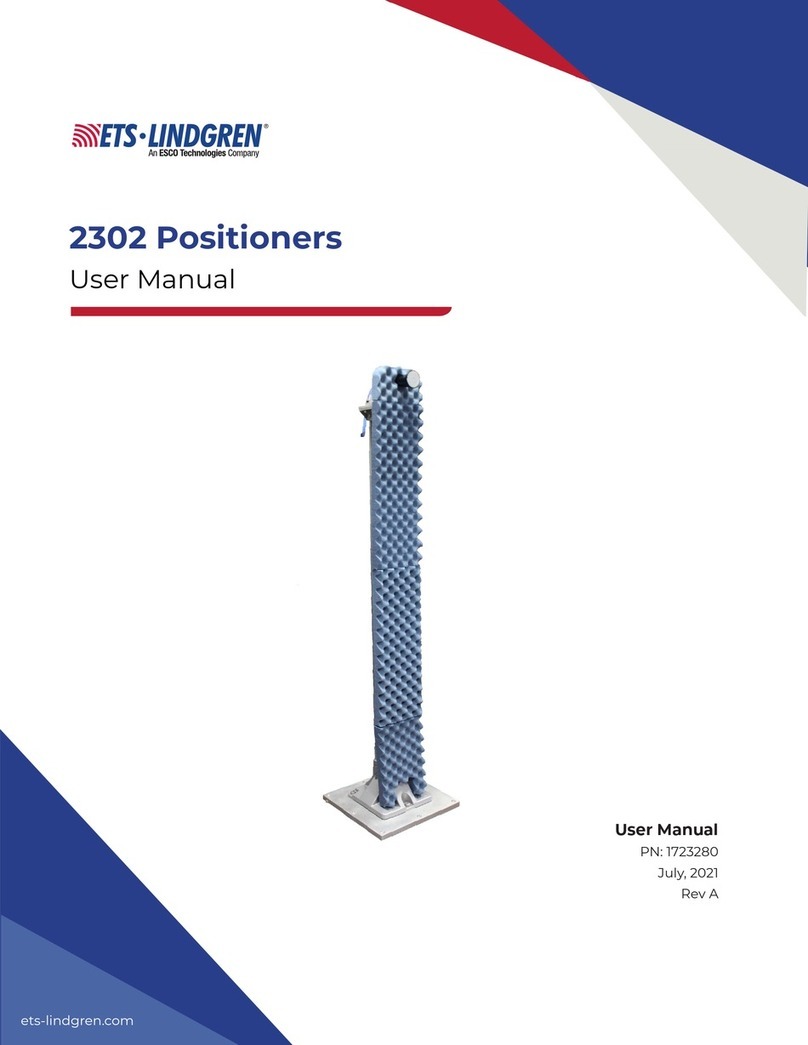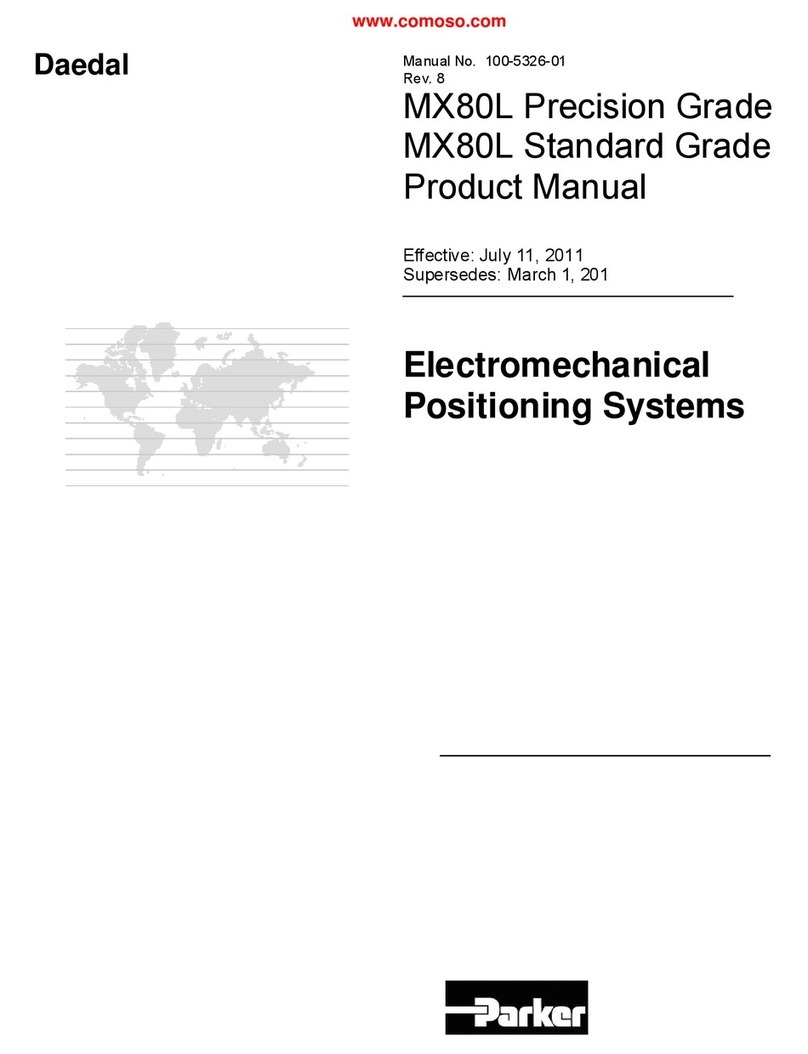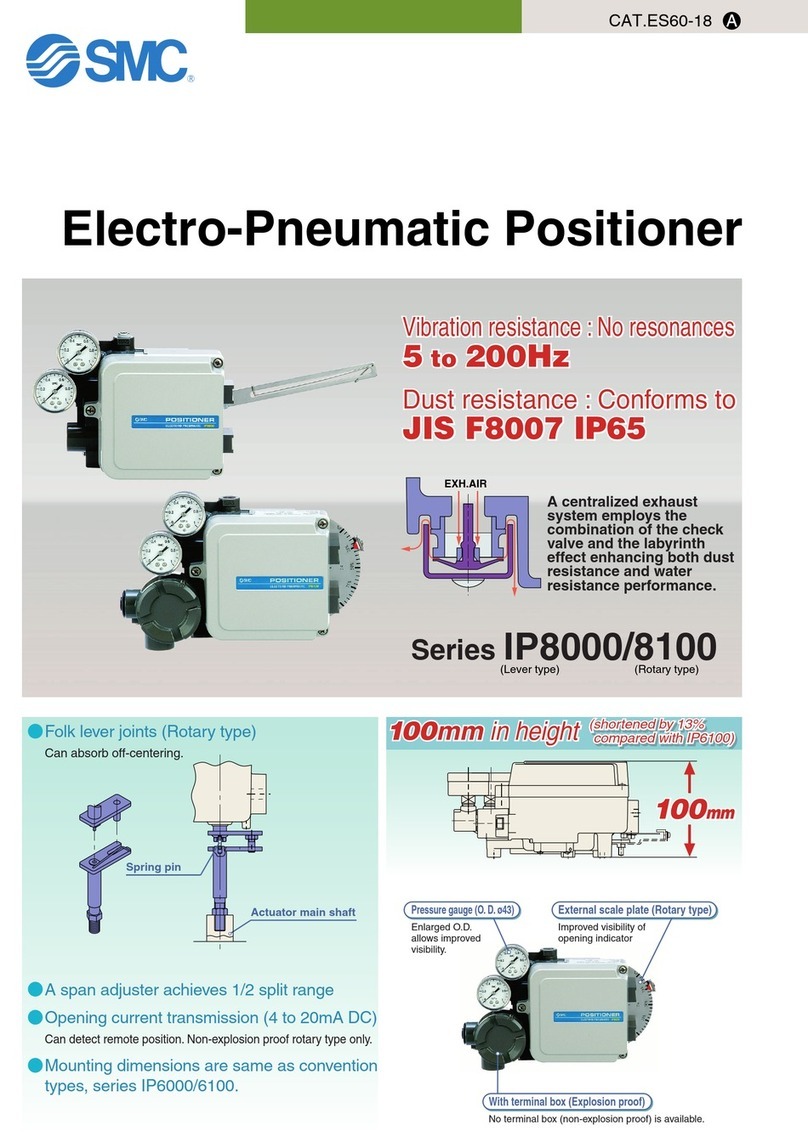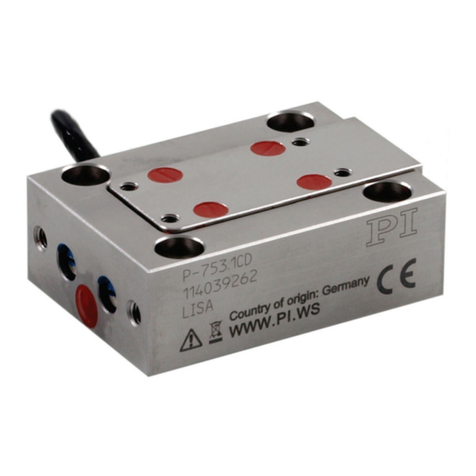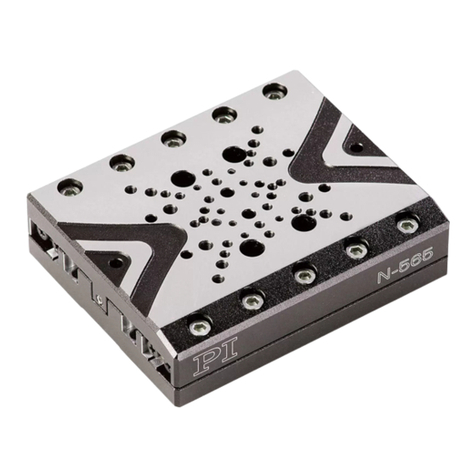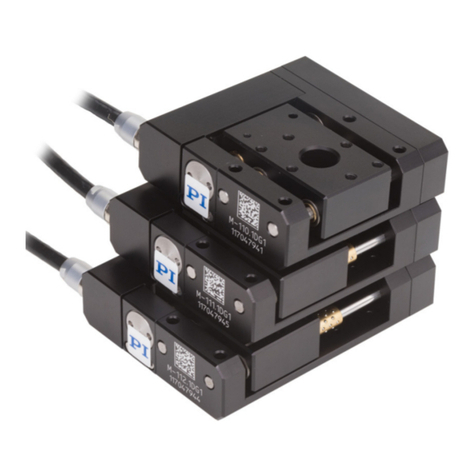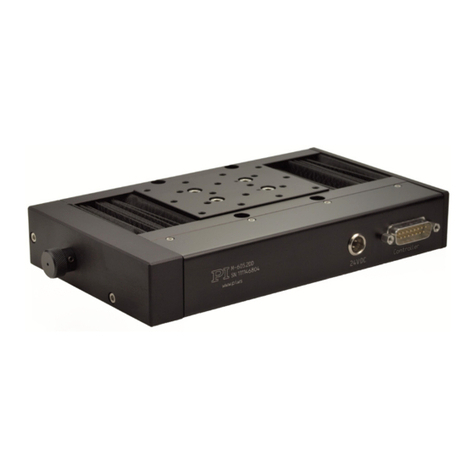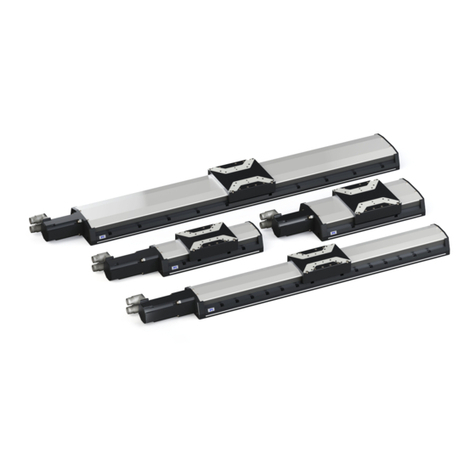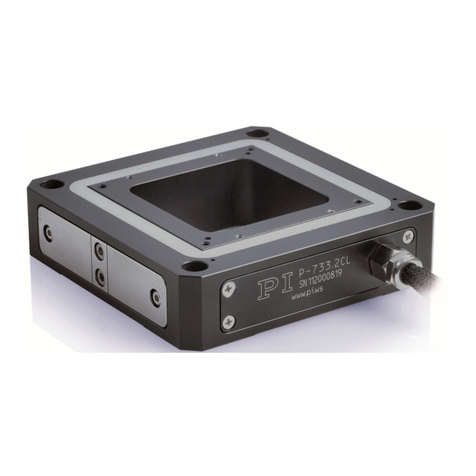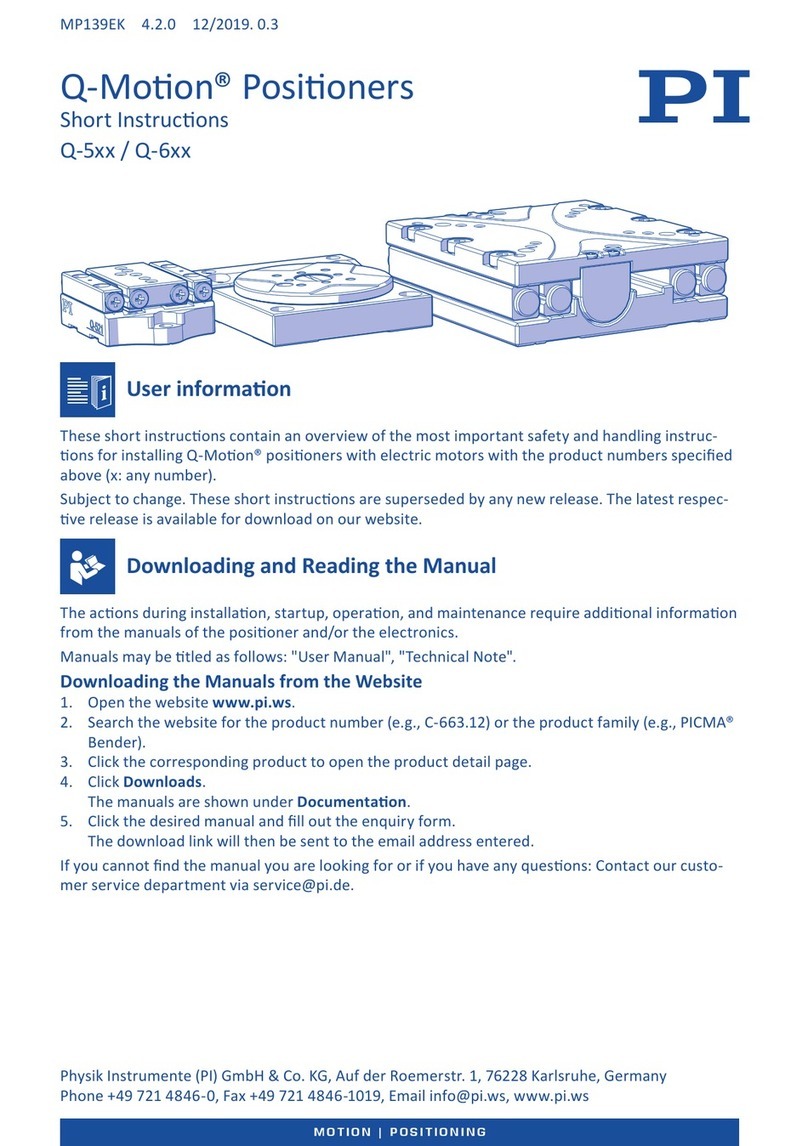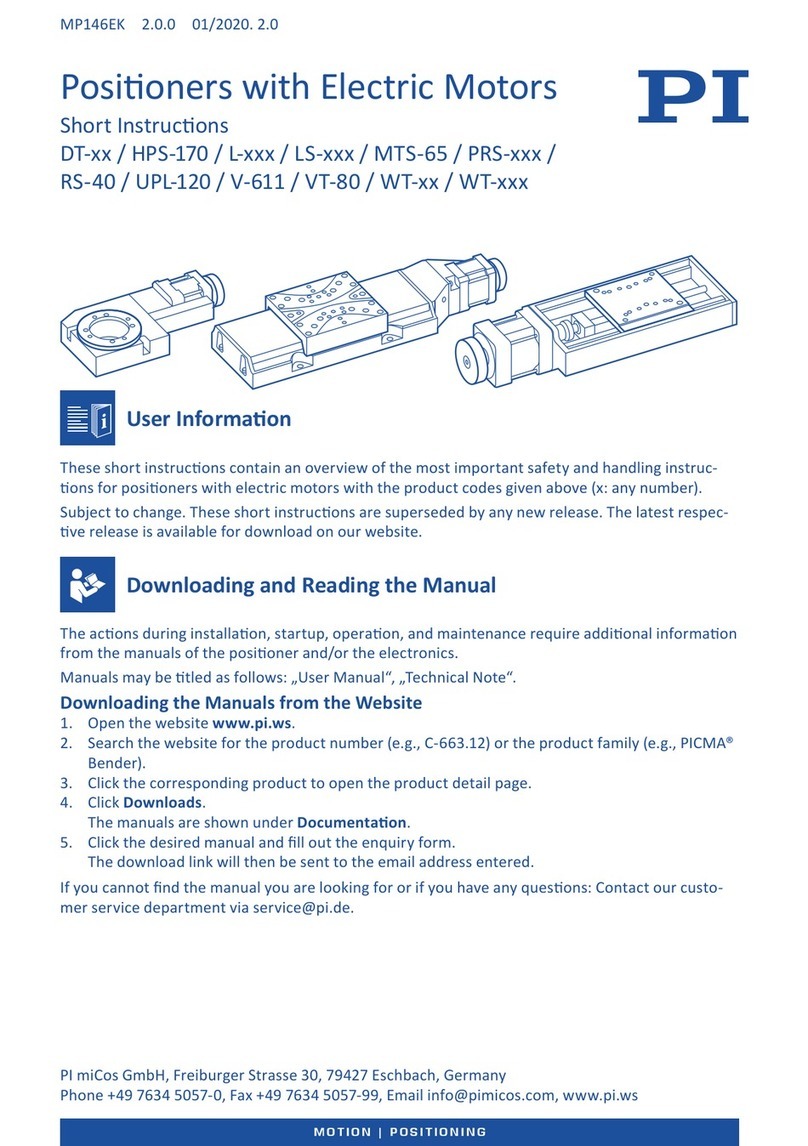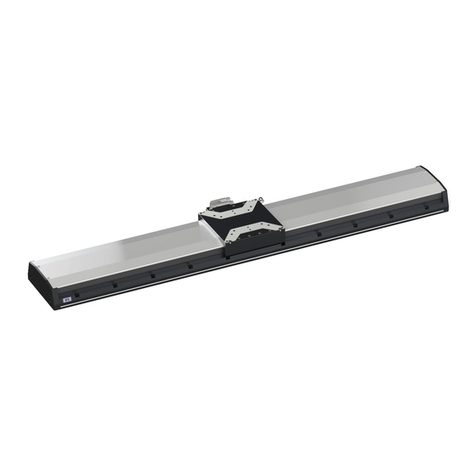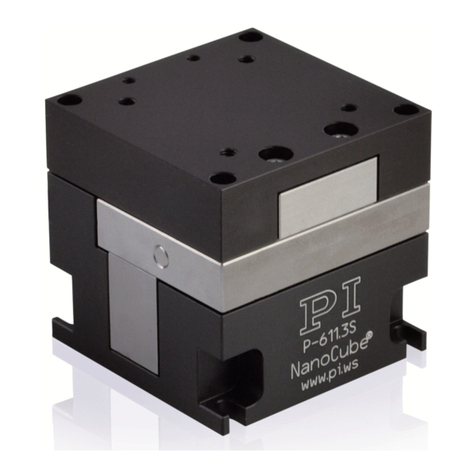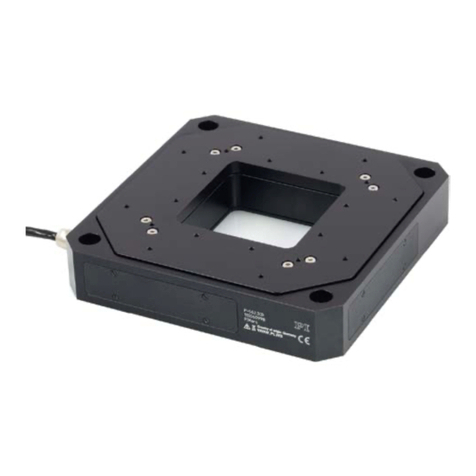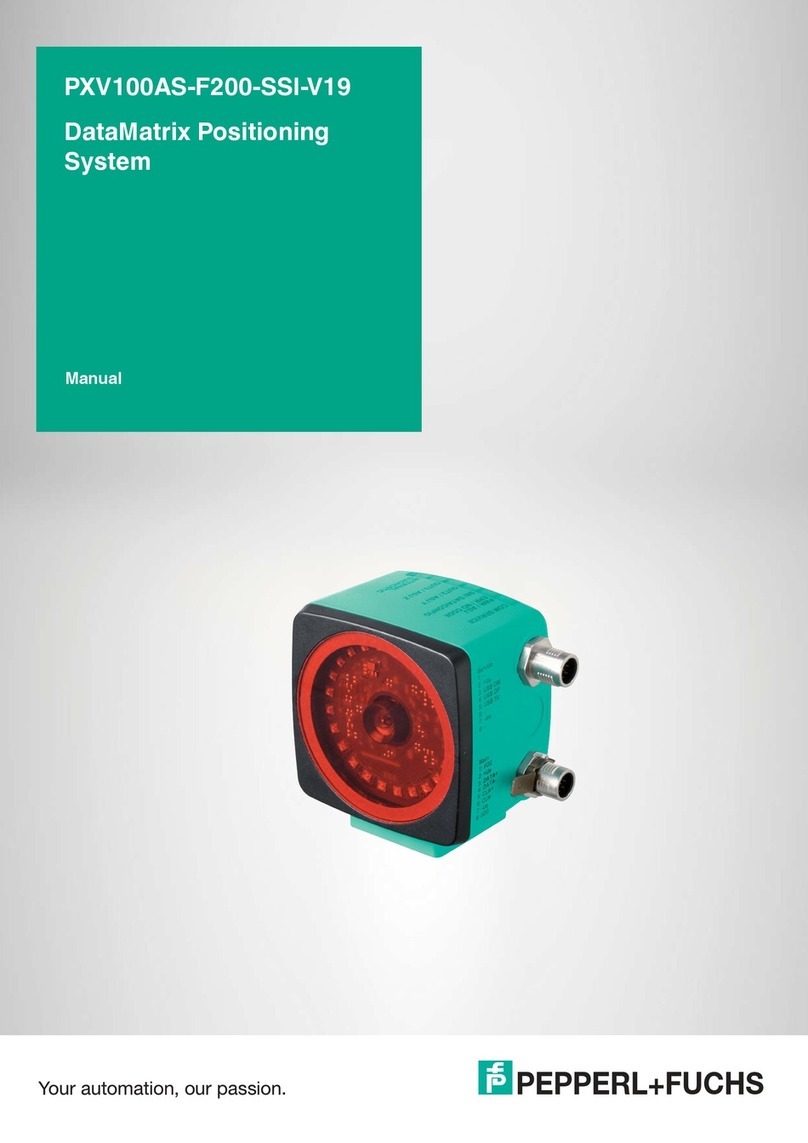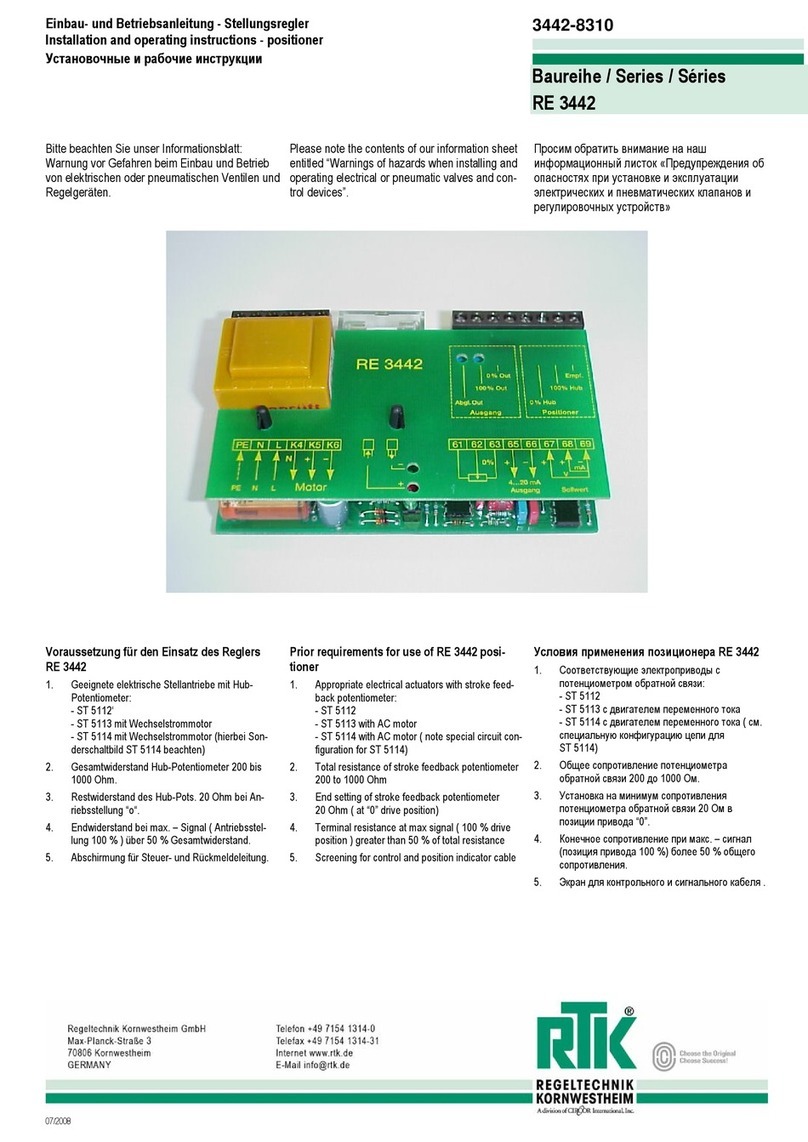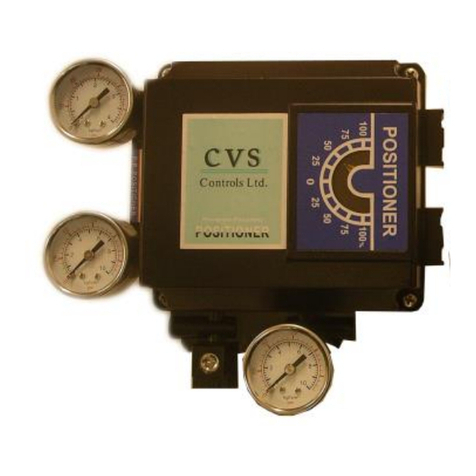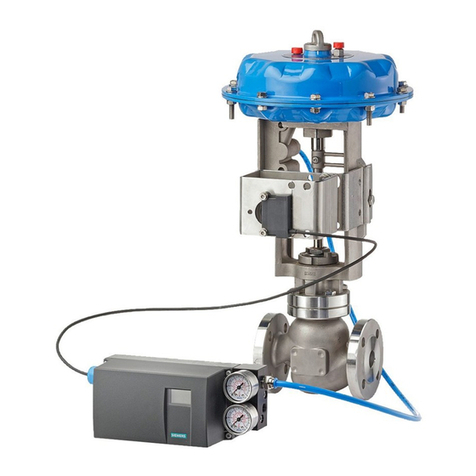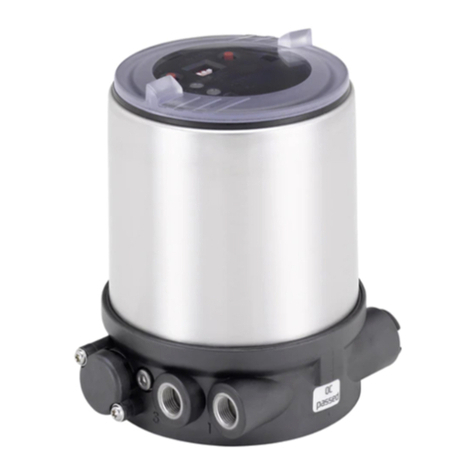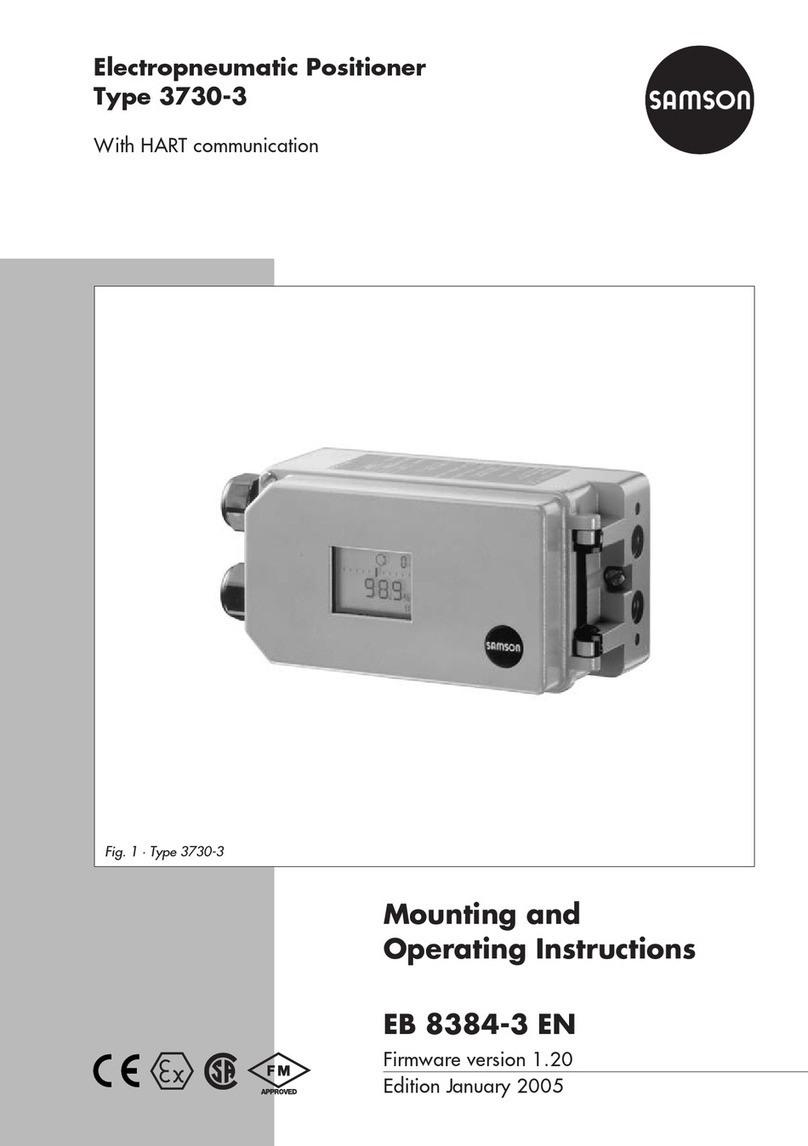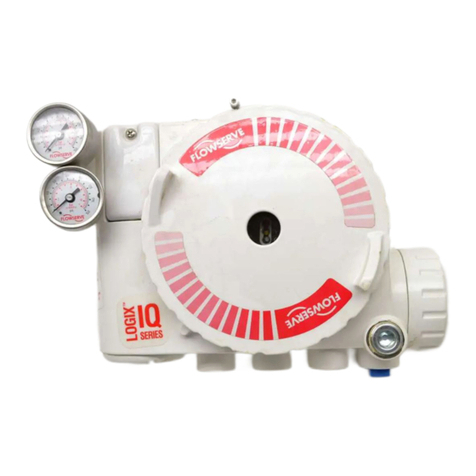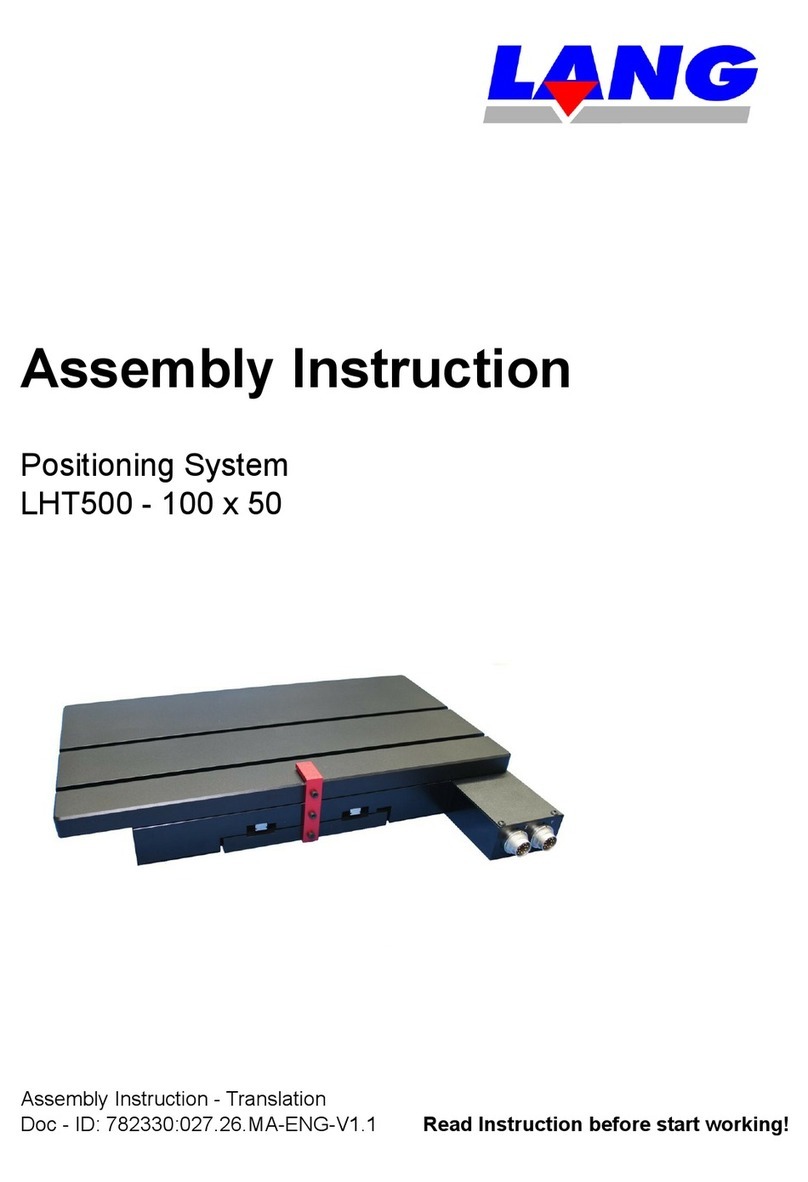
Introduction
■Reduced cost of ownership and improved reliability, because no
external driver is required
■Elimination of PWM amplifier noise radiation, by mounting the
amplifier and motor together in a single, electrically shielded case
M-403.xDG models are equipped with a DC motor and a shaft-mounted
optical encoder, providing a minimum incremental motion of 0.2 µm.
M-403.x2S models feature a direct-drive, 2-phase stepper motor, providing
very smooth operation and a resolution of 0.1 µm per step.
Limit and Reference Switches
For the protection of your equipment, non-contact Hall-effect limit and
reference switches are installed. The direction-sensing reference switch
supports advanced automation applications with high precision.
The M-403 / M-413 and M-404 / M-414 series of linear stages form a modular
system. The M-403 is the basic family, providing travel ranges from 25 to 200
mm. M-413 is designed for higher loads with travel ranges from 100 to 300
mm. The M-404 and M-414 stages have the same travel ranges and load
capacities, but offer higher precision and more speed..
1.2 Prescribed Use
Correct operation of the M-403 positioners is only possible in combination
with a suitable controller/driver (ordered separately) and software.
The controlling device must be able to read out and process the signals from
reference and limit switches and the incremental position encoder to ensure
proper performance of the servo-control system.
Based on their design and realization, the M-403 stages are intended for
single-axis positioning, adjusting and shifting of loads at various velocities.
M-403 positioners can be mounted horizontically or vertically. To achieve the
specified guiding accuracy, the positioners have to be mounted on a flat
surface to avoid torsion of the basic profile.
The positioners may only be used for applications suitably in accordance
with the device specifications.
Respect the safety instructions given in this User Manual. The operator is
responsible for the correct installation and operation of the M-403.
www.pi.ws M-403 MP 73E Release 2.0.1 Page 4
